#Shaping #Spaces #Exploration #Iconic #20th #Century #Furniture #Styles
The 20th century was a crucible of artistic exploration, technological advancement, and the shifting of societal values. This transformative period witnessed the emergence and evolution of several iconic furniture styles, each leaving an undeniable mark on design history. While we aren’t diving into every 20th Century furniture style, we’ll embark on a journey through the decades, delving into some of the most influential furniture styles.
Art Nouveau (1890-1910)
Art Nouveau was the first major 20th century furniture style, which emerged at the end of the 19th century as a response to the Industrial Revolution’s mechanization. With its emphasis on organic forms, intricate curvilinear motifs, and a celebration of craftsmanship, Art Nouveau breathed life into furniture design. Characterized by its sinuous lines and nature-inspired ornamentation, this style sought to harmonize art with everyday life. Jewel-like details adorned pieces, and materials like wood, glass, and wrought iron were crafted into functional art that resonated with the era’s romantic ideals.
Art Nouveau Rocking Chairs
This Art nouveau rocking chair, crafted by the renowned manufacturer, Thonet Brothers, originates from Austria in 1910. The chair features a solid beech frame, which showcases a rich walnut hue stain, adding warmth and depth to its appearance. Secondly, one of the distinctive elements of this rocking chair is its original braid, which has been well-preserved and remains in good condition. The braid adds a touch of intricacy and texture to the design, enhancing its Art Nouveau charm.
Art Nouveau Bed Frame
A lovely example of Art Nouveau’s ornate style is this stunning Iron Cast Double Bed Frame. This piece is a true work of art, with the iron curved into gorgeous waves, florals and figures. It is the perfect example of the style’s emphasis on organic forms and brings any bedroom to life.
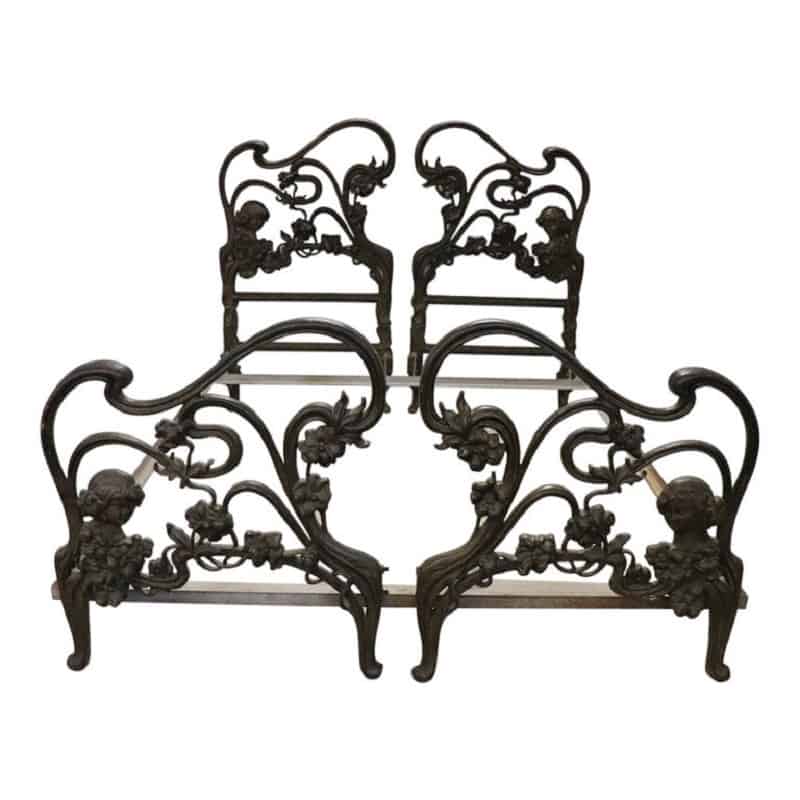
Art Deco (1920s – 1930s)
Art Deco was a glamorous response to the austerity of World War I and the economic hardships of the time. Embracing luxuriousness, bold geometry, and rich materials, Art Deco furniture exudes elegance and sophistication. The streamlined silhouettes and lavish ornamentation capture the soul of the Roaring Twenties. Also, designers used intricate marquetry, lacquered finishes, and materials like ebony and ivory.
Emile Ruhlmann Secretary Cabinet
Emile Ruhlmann was one of the many great Art Deco furniture designers whose use of rich materials left a strong impact on the style. This État Cabinet was commissioned by The Met in 1295. The complex white marquetry is reminiscent of a jigsaw puzzle. The cabinet is made of a deep Macassar ebony, chestnut and mahogany.
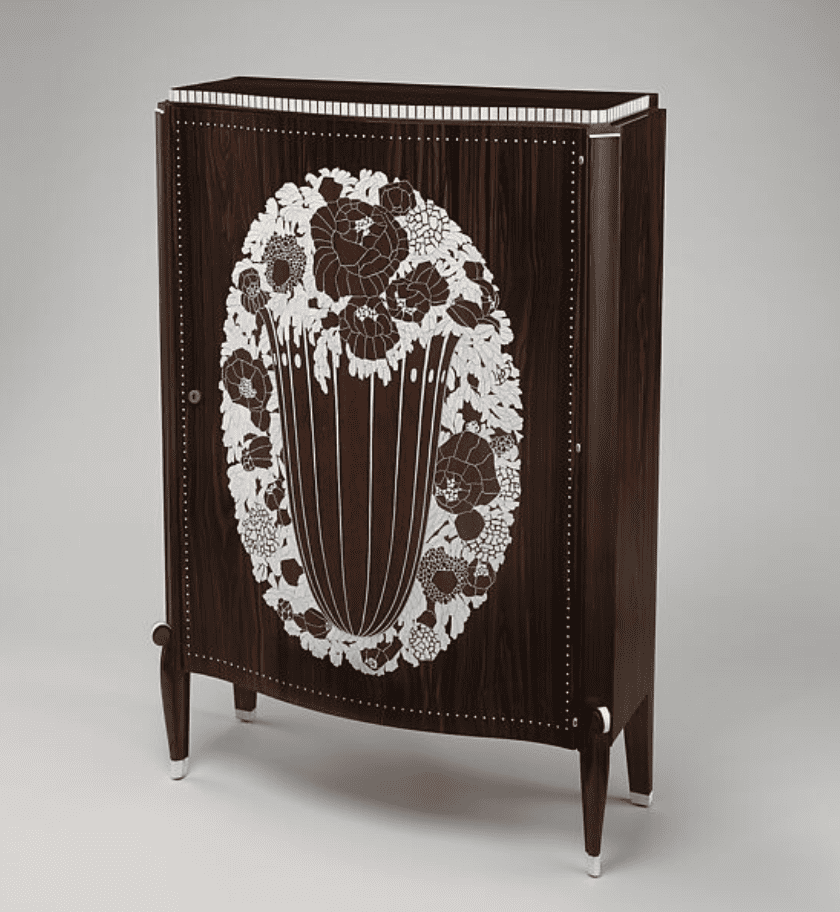
Art Deco Coffee Tables
An incredible example of Art Deco’s opulence and playful use of shape is this Rosewood Coffee Table. Hailing from France, this coffee table’s curved legs, black glass top and metal base result in luxurious visual contrast. This coffee table adds elegance to absolutely any living room.
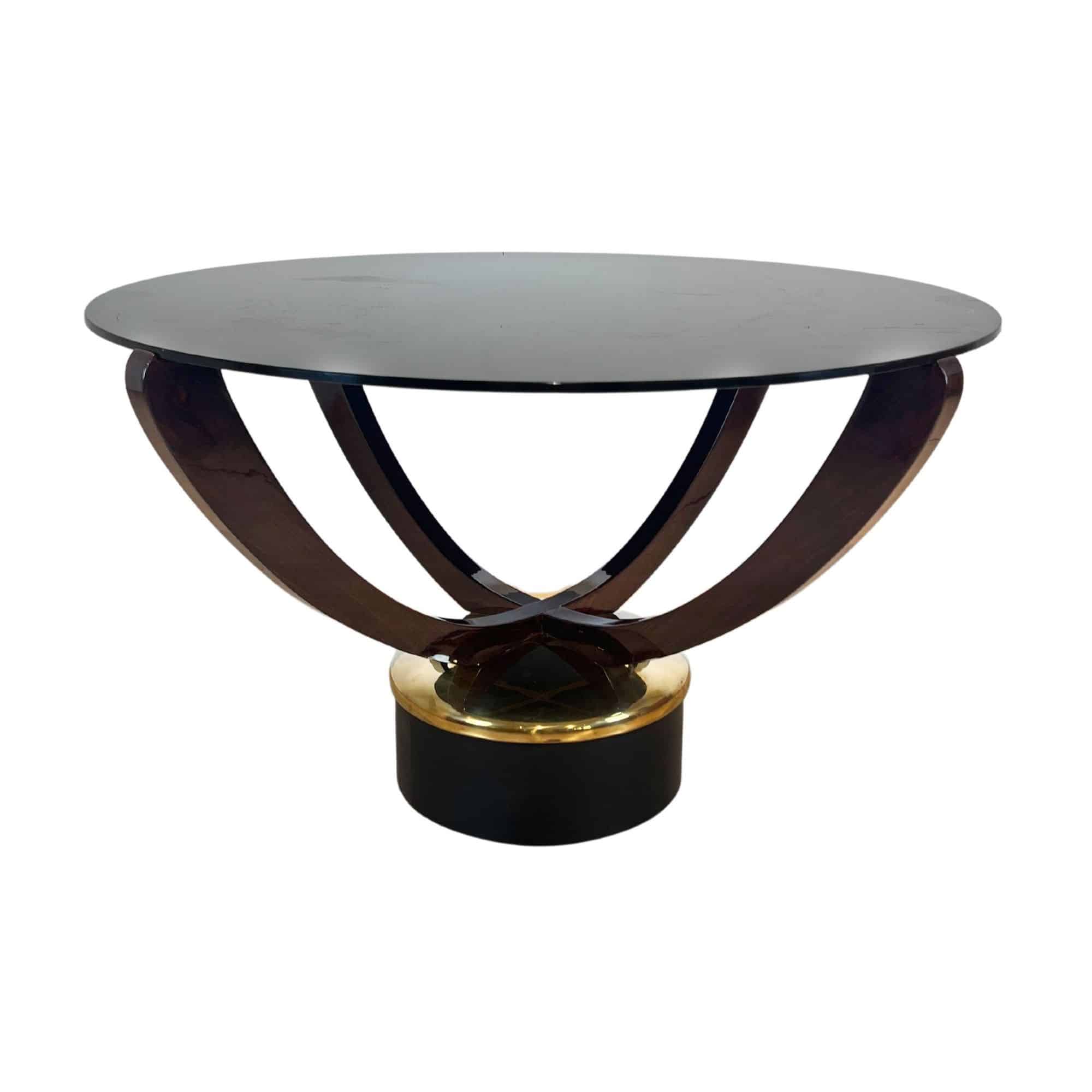
Bauhaus (1919 – 1933)
The Bauhaus school, founded by Walter Gropius, revolutionized design in the early 20th century by advocating for the union of art, craft, and technology. Functionalism, minimalism, and the concept of “form follows function” were core tenets of the Bauhaus movement. The school’s furniture designs, marked by geometric shapes, simplicity, and a focus on practicality, laid the foundation for modernist design principles. So, favored materials were tubular steel, glass, and leather materials. This showed a departure from ornate aesthetics in favor of a more industrial, efficient approach.
Bauhaus Armchair
Take a look at this Steel Bauhaus Armchair from Germany circa 1930. It features a characteristic tubular steel frame and a comfortable dark gray leather upholstery. With its clean lines, this chair is the perfect intersection of comfort and sophistication that works as a desk chair or a statement piece.
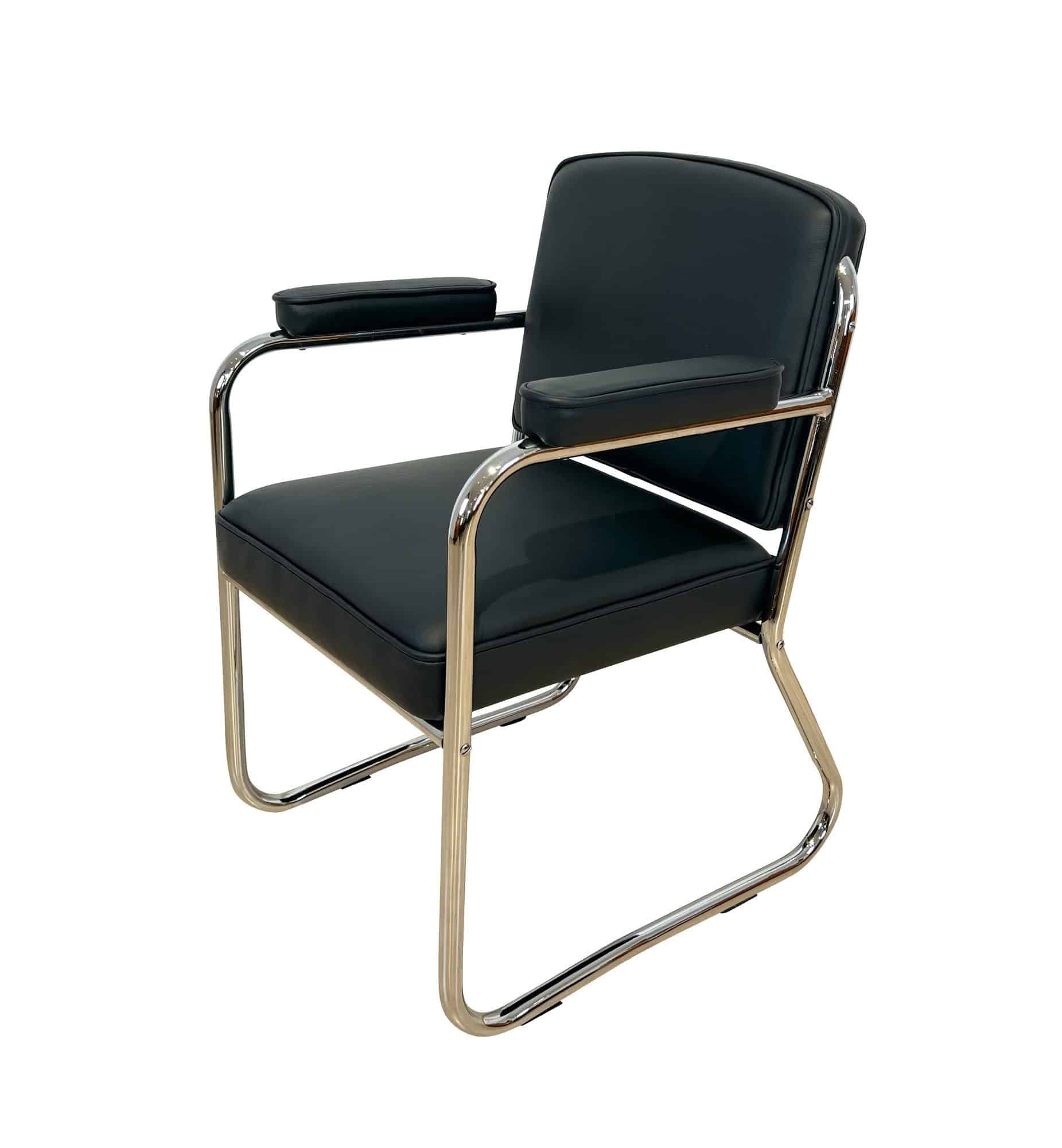
Mücke-Melder Desk
Another example of Bauhaus design available now on Styylish is this Bauhaus Mücke-Melder Desk from Czechoslovakia. It is in the style of famed Bauhaus designer, Marcel Breuer, utilizing his classic steel-tube design. The desk is has an oak veneer on softwood and features eight storage drawers. Furthermore, this desk compliments any work space and can maximize productivity by creating a sleek and clutter-free surface.
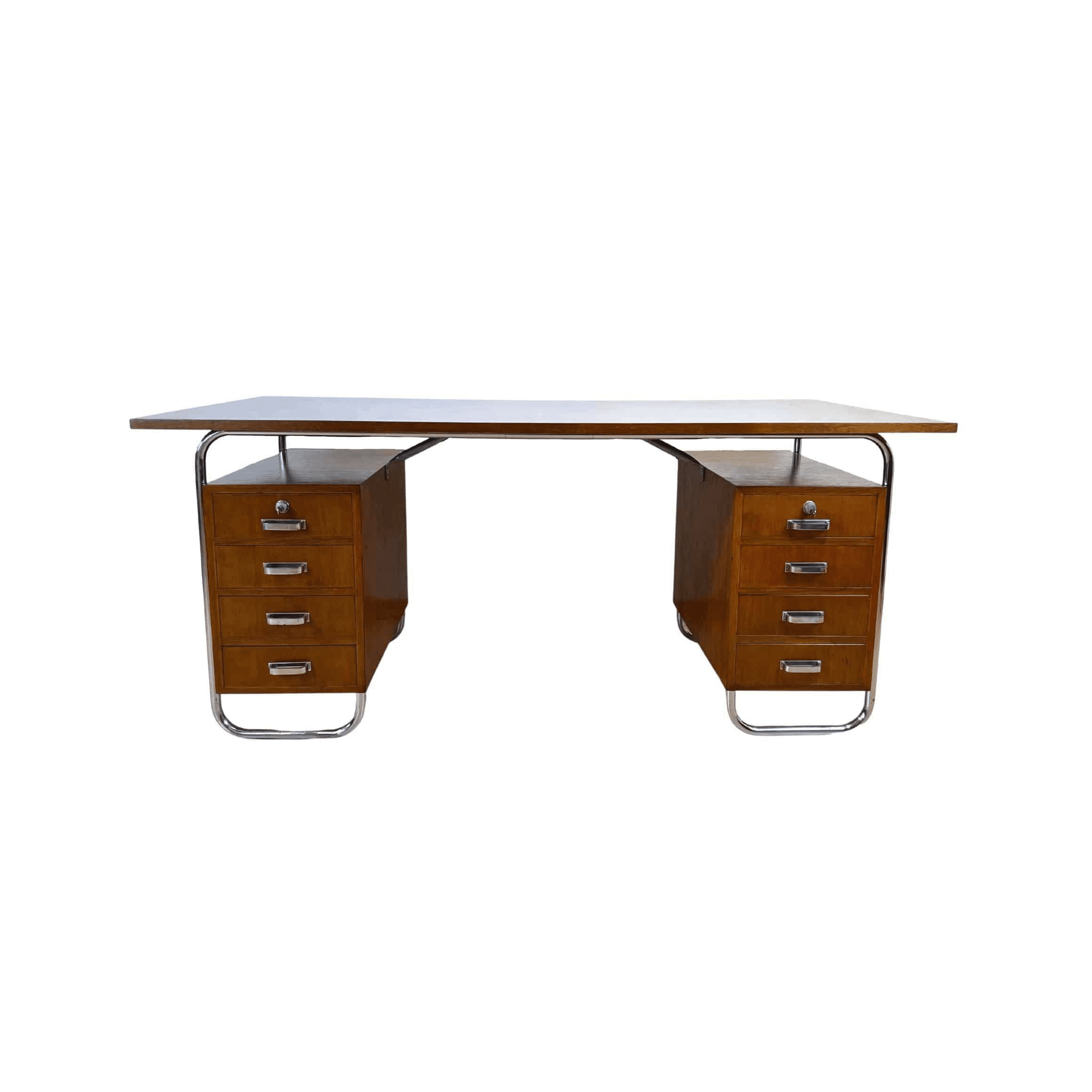
Modernism (1920s – 1950s):
Modernism is synonymous with simplicity, functionality, and the rejection of unnecessary ornamentation. Evolving during World War II, it rejected historical styles. Modernist furniture focuses on clean lines, neutral colors, and an emphasis on the concept of open space. Pioneering designers like Charles, Ludwig Mies van der Rohe and Ray Eames introduced innovative materials such as molded plywood and plastic, bringing in an era of mass production without compromising design integrity. In sum, the Eames Lounge Chair and other iconic pieces exemplify the marriage of comfort, utility, and aesthetic appeal.
Iconic Barcelona Lounge Chairs
Mies van der Rohe’s Pair of Barcelona Lounge Chairs are available now on Styylish! These iconic chairs were originally designed for the German Pavilion at the World Exhibition in Barcelona, and have been remarkably preserved from the 1970s. The chairs are made of chrome plated flat steel and upholstered with black leather. Additionally, as a design classic and a symbol of the modernist style, the chairs easily blend with a range of interior design styles. Owning a Barcelona chair allows you to be a part of history, representing the legacy of exceptional design and craftsmanship
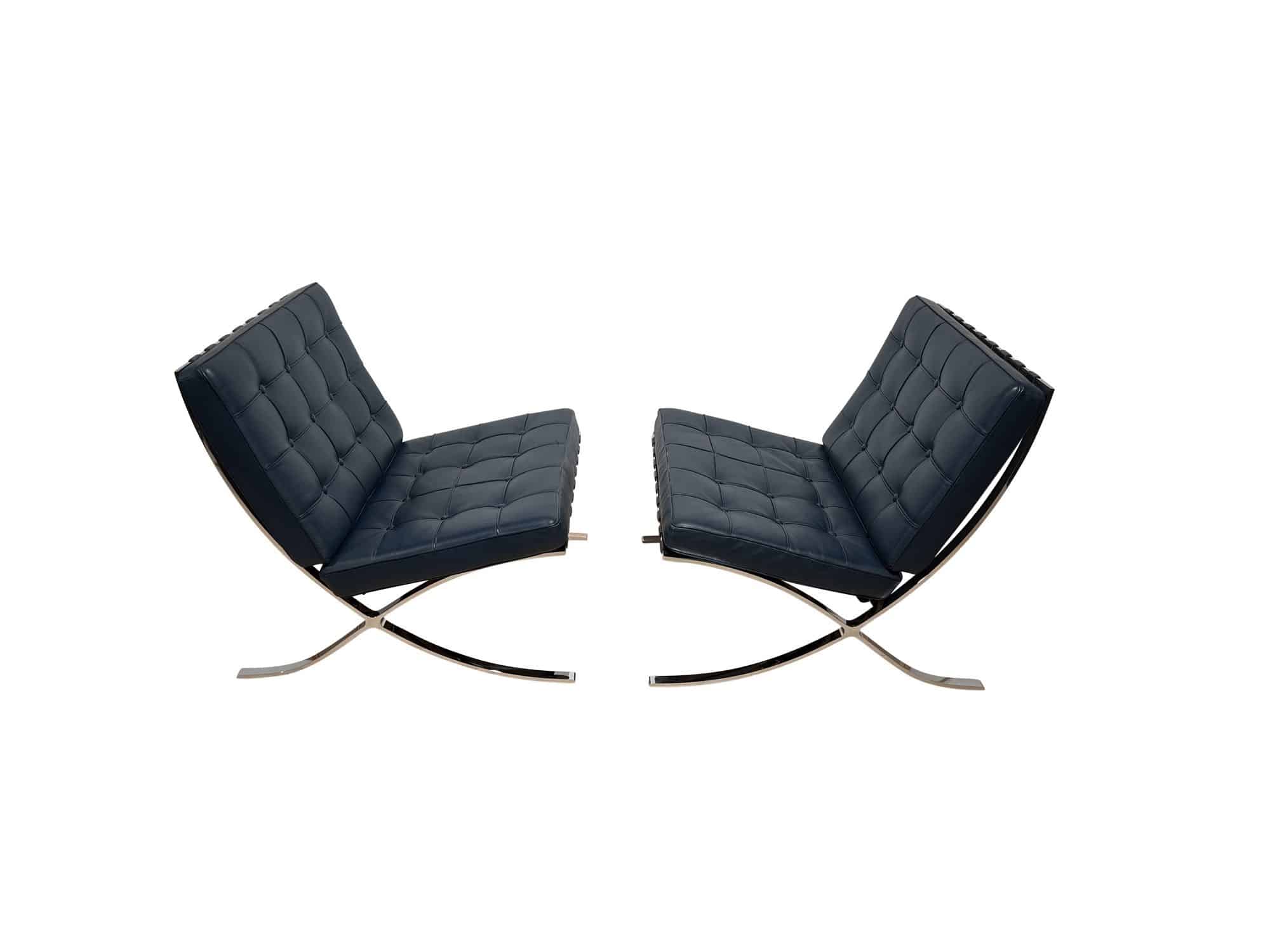
Another Iconic Piece that came out of the Modernist furniture movement is Charles Eames’ famous Herman Miller chair. The chair was introduced in 1956 by spouses, Charles and Ray Eames at Herman Miller. It stands as an iconic symbol of mid-century modern design. Additionally, its use of molded plywood and sleek, organic form revolutionized furniture aesthetics and comfort. This timeless masterpiece not only redefined furniture design but also continues to influence contemporary interiors and inspire generations of designers worldwide.

Scandinavian (1930s – 1970s):
The Scandinavian design movement emphasized functionality, minimalism, and a connection to nature. The harsh Nordic climate had a great influence on designers like Alvar Aalto and Arne Jacobsen, who incorporated organic shapes, light woods, and functionalism into their creations. Further, this approach resonated with the idea of “hygge,” creating warm and inviting interiors that prioritized comfort. Scandinavian design’s enduring appeal lies in its simplicity, versatility, and timelessness.
Scandinavian Style Chairs
Carl Hansen’s Wishbone Chair is a wonderful example of Scandinavian design’s focus on style, sophistication and durability, with its arched back and hand-woven paper cord seat. Since its inception in 1950, this timeless piece has been in constant reproduction. This recognizable silhouette compliments all living and dining areas.

Wood Sideboard
Another sleek piece of Scandinavian design available on Styylish is the Nils Jonsson Sideboard. The sideboard is made of light teak wood and has a black sliding door with a sculpted handle. Its easily sliding doors reveal a space with height adjustable shelves and five drawers. Its size makes this piece incredibly versatile for many spaces, and could be used as a sideboard in a living room, a dresser in a bedroom or as a bar or media console.
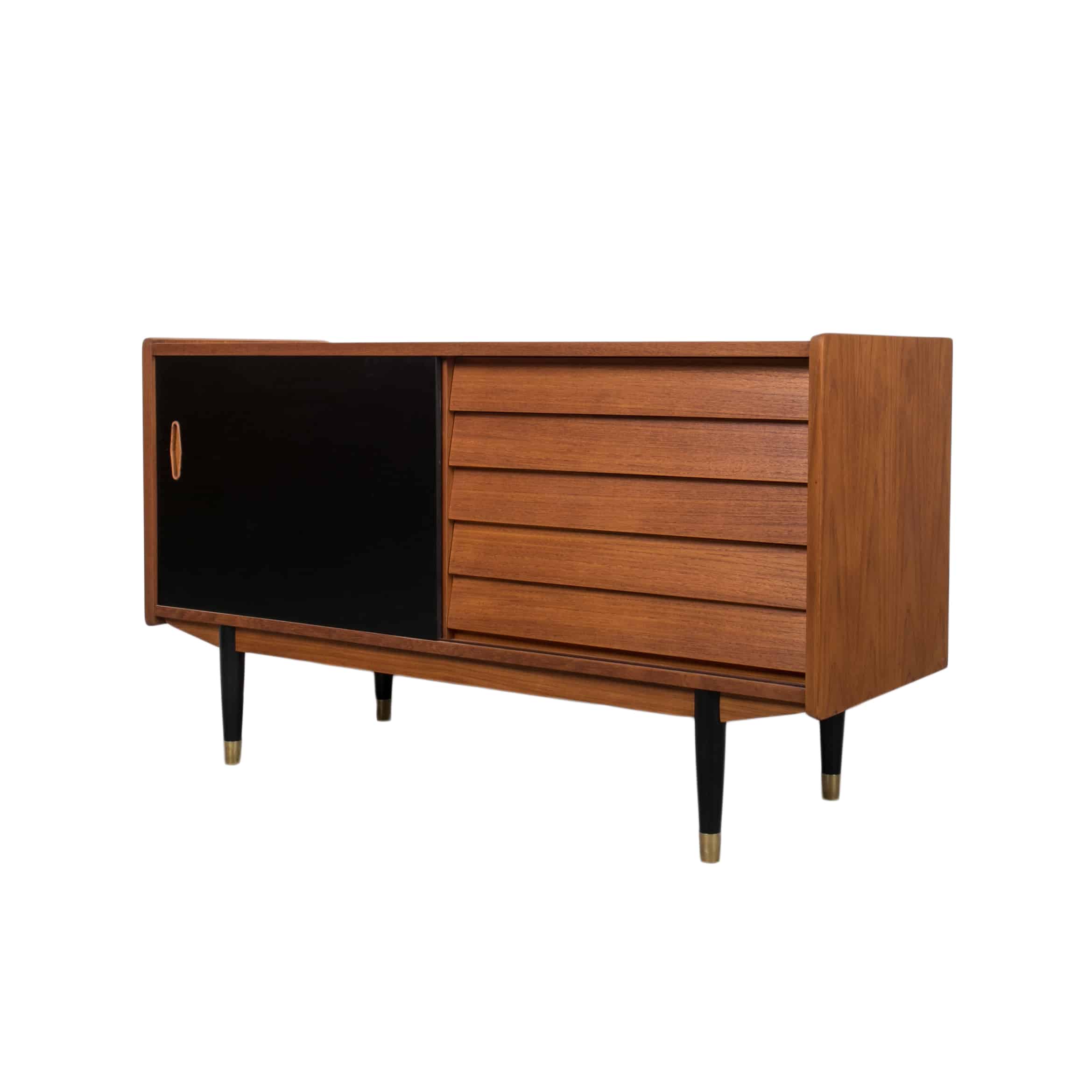
Minimalism (The 1930s- through the end of the 20th Century):
Minimalism emerged as a reaction against consumerism and excess. Therefore it was characterized by simplicity, clean lines, and a focus on maximizing comfort, minimalist furniture design champions the idea that less is more. Monochromatic colors, uncluttered spaces, and a deep appreciation for negative space define this style. Renowned designers like Mies van der Rohe and Dieter Rams epitomize minimalist principles, crafting pieces that prioritize functionality and a sense of calm.
Minimalism embraced warmer materials and textures, softening the starkness of the previous decade. Furniture designers drew from natural woods and muted color palettes to create pieces that were both visually pleasing and comfortable.
This custom-made minimalist arm chair exemplary of the emphasis on muted colors and comfort. Its plush cushions maximum comfort, and its monochrome off white helps to brighten up any living room, white the light wood of the arms and legs give the piece clean, natural lines.
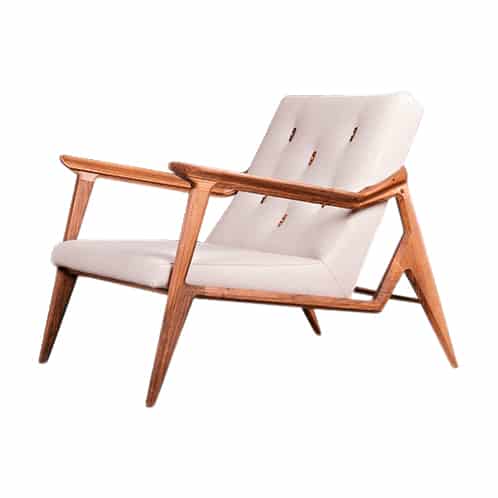
Aeron Chair: The Perfect Office Chair
Herman Miller introduced the Aeron Chair in 1994. Designed by Don Chadwick and Bill Stumpf, the Aeron Chair epitomized ergonomic innovation and sleek appearances. Its distinctive mesh backrest, adjustable features, and emphasis on comfort addressed the growing demand for office furniture that catered to the needs of modern workspaces. With the introduction of the internet, seating for computer work became revolutionary. The Aeron Chair’s popularity in the 1990s not only transformed office seating but also cemented Herman Miller’s reputation as a leader in functional and cutting-edge design for the workplace.

The Lasting Impact of 20th Century Furniture Styles and Beyond
The evolution of furniture design throughout the 20th century is a testament to the dynamic interplay between artistic expression, societal changes, technological innovations, and shifting design philosophies. Furthermore, each decade left its unique mark on the world of furniture, reflecting the unique circumstance of its time. These iconic movements continue to inspire contemporary designers and remind us that furniture is not just functional, but is also a canvas for artistic expression, cultural reflection, and innovation.



